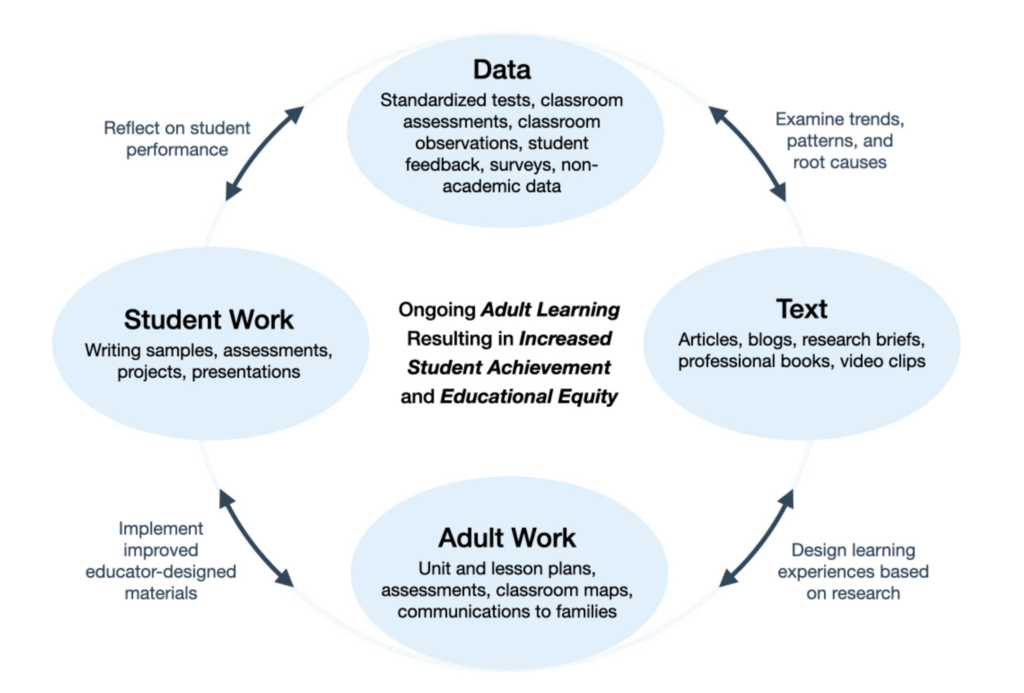The work educators do within Professional Learning Groups (PLGs) typically falls into four categories:
- Analyzing data
- Examining professional texts
- Improving adult work
- Learning from student work
Groups need not follow a set sequence; a PLG might begin its work together in any one of these areas and allow the questions that emerge to inform the next logical step in their learning. For example, a group might start by reading a text to inform the vision they have for their students’ learning experiences, then determine what data they could collect and analyze to understand students’ current reality. Disaggregated data can help identify systemic inequities. Group members then agree on the kinds of changes they will implement in their lesson or unit plans and share their adult work for feedback. Finally, members could bring samples of student work in order to reflect on whether the adjustments they made in their instruction had the desired impact

 This resource was produced by the Great Schools Partnership and is licensed under a Creative Commons Attribution-NonCommercial-ShareAlike 4.0 International License.
This resource was produced by the Great Schools Partnership and is licensed under a Creative Commons Attribution-NonCommercial-ShareAlike 4.0 International License.
Interested In Learning More? Let’s Talk.
Personalized, equitable, and student-centered education is too important to put aside. Together, we can improve learning for all your students.
Contact Us